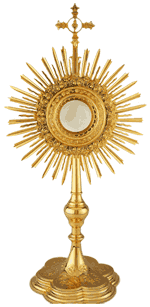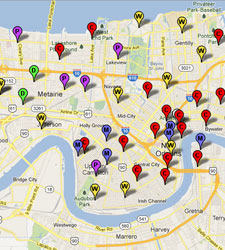With Lent approaching in two weeks, I want to call attention to the changes that we may observe in the liturgies. “Austere” is the watchword for the liturgical celebrations of the Season of Lent. The Church has proclaimed a time of fasting and self-denial and she teaches by example. The priest is vested in violet, “the gloomy color of affliction and mortification,” except on the Fourth Sunday of Lent (Laetare Sunday) when he may wear rose vestments. During Lent the sanctuary is bereft of flowers and we use less ornate linens. The Gloria is not prayed (except on the two Solemnities) and the Alleluia is entirely absent throughout Lent. Further, the use of musical instruments is limited to the accompaniment of singing. By this penitential “fast of the senses,” Holy Mother Church prepares our hearts for a jubilant Easter renewal.
In keeping with liturgical tradition and Church guidelines, Lenten liturgies are sparser and shorter. One way we accomplish that in our parish is by distributing the Eucharist only under the species of bread. Although receiving Communion under both species is more perfect from the point of view of the sign, it is important to remember the Church’s teachings that Christ is received whole and entire under either species. Thus, one’s Communion is perfectly complete when it is received under the species of bread alone. One is not deprived of extra graces by not receiving from the chalice.
Further, the Church has established norms for the reception of both species, and those norms do not anticipate Communion under both kinds at every Mass. In the General Instruction to the Roman Missal (the “GIRM”), three occasions are specifically mentioned when Communion under both species may be given: for priests who are not able to concelebrate, for the deacon and others who perform some role at Mass, and for a “community” Mass, such as a small group. The GIRM also states that the diocesan Bishop may lay down norms for the distribution of Communion under both kinds for his own diocese. And those occasions (“may be done”) constitute exceptions to the longstanding norm (one that has existed since at least the 11th century) of receiving only under one species. So Communion under both species may be given according to the pastor’s discretion, but it is not the norm.
On Easter Sunday, we will joyfully celebrate the “fullness” of the sign of Communion as we turn from the “austerity” of Lent to the glory at the Resurrection.




